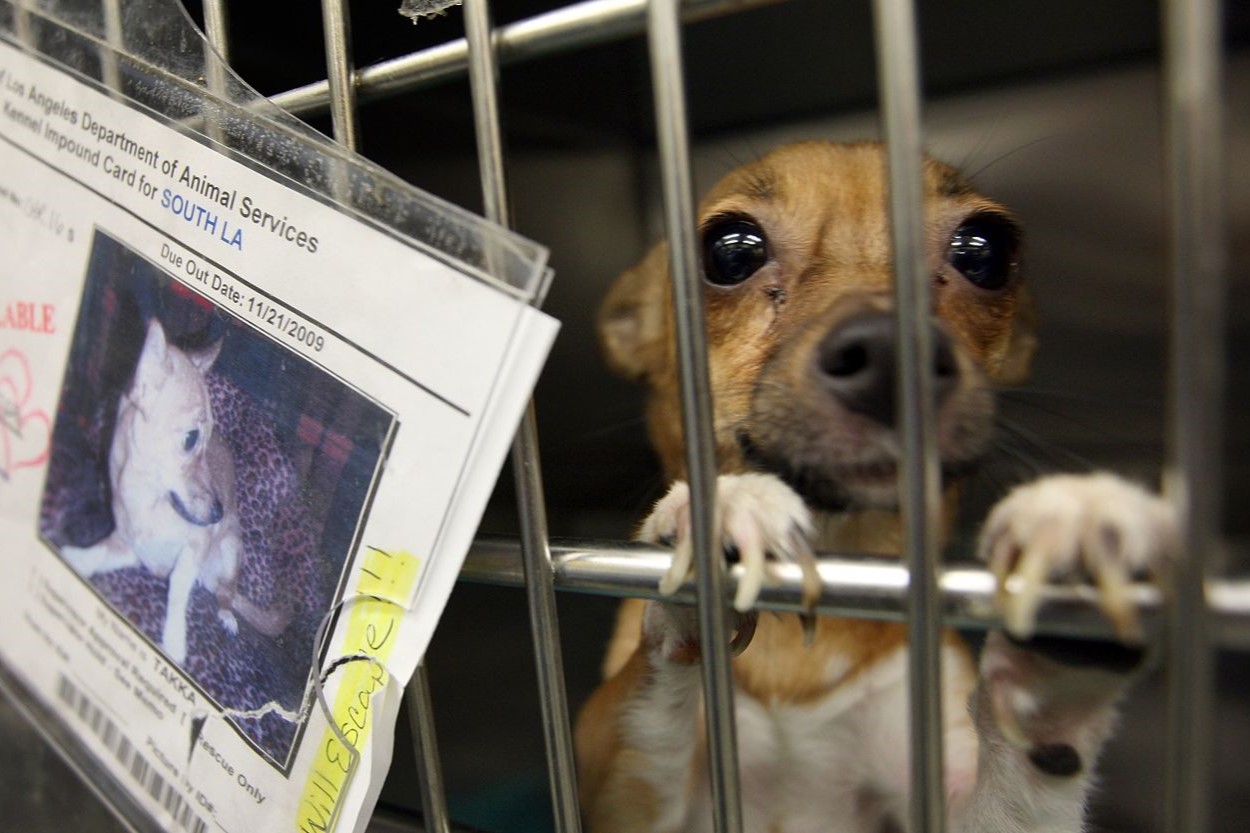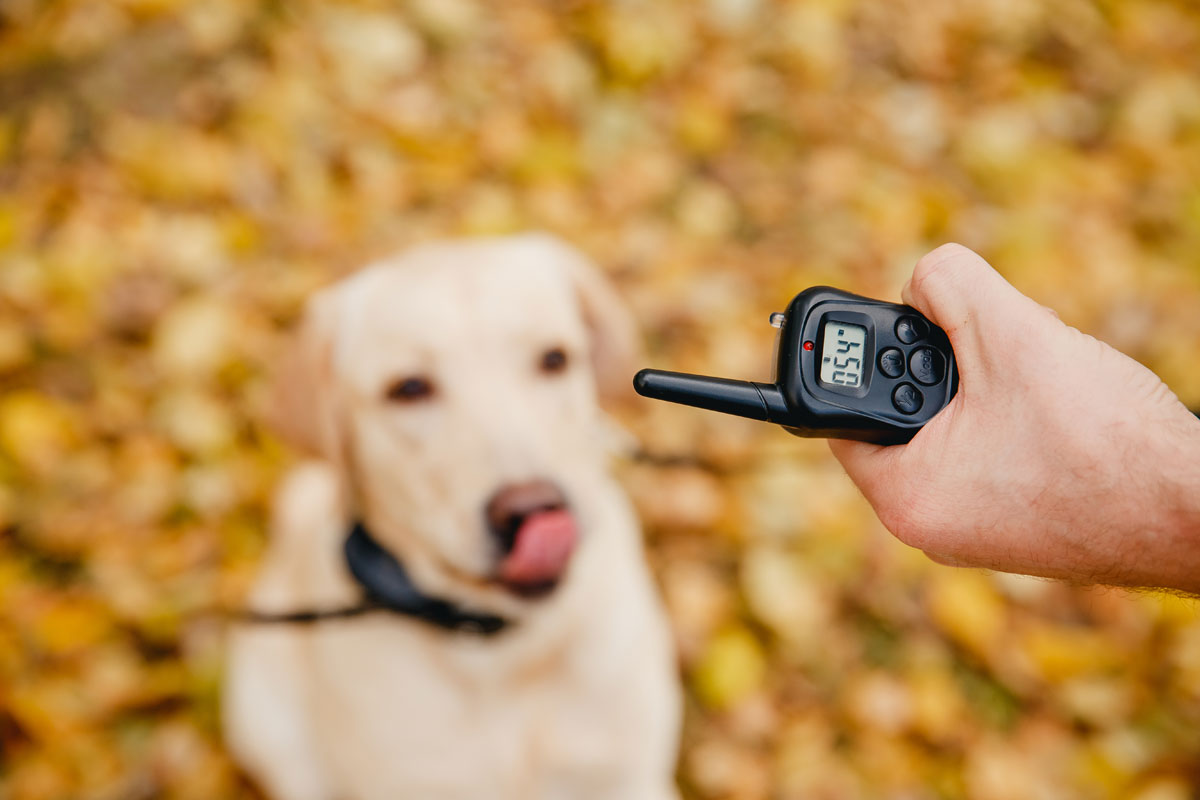Home>Pets & Animals>Uncover Shocking Animal Abuse: The Truth Behind Pet Store Photos


Pets & Animals
Uncover Shocking Animal Abuse: The Truth Behind Pet Store Photos
Published: January 29, 2024
Uncover the shocking truth behind pet store photos and learn about animal abuse in the pets and animals industry. Discover the reality behind the images.
(Many of the links in this article redirect to a specific reviewed product. Your purchase of these products through affiliate links helps to generate commission for Noodls.com, at no extra cost. Learn more)
Table of Contents
Introduction
Pet stores often present an idyllic image of adorable puppies and kittens, nestled in cozy displays, their innocent eyes gazing out from behind the glass. These heartwarming scenes are carefully crafted to tug at our emotions, enticing us to bring these precious animals into our homes. However, what lies behind these seemingly charming snapshots is a grim reality that often goes unnoticed. The truth behind pet store photos unveils a distressing tale of animal exploitation, suffering, and neglect.
While these carefully curated images may evoke feelings of warmth and compassion, they often serve as a facade, concealing the harsh conditions and unethical practices that perpetuate the pet trade industry. The captivating allure of these snapshots can cloud the stark truth that many of these animals endure lives of misery and mistreatment before and after they are captured in these heartwarming images.
Unbeknownst to many well-intentioned consumers, the animals depicted in these photos are often products of large-scale commercial breeding facilities, commonly referred to as "puppy mills" or "kitten factories." These facilities prioritize profit over the well-being of the animals, subjecting them to deplorable living conditions, inadequate medical care, and emotional neglect. The glossy veneer of pet store photos fails to reveal the suffering and trauma experienced by these voiceless creatures, who are reduced to mere commodities in a profit-driven industry.
As we delve deeper into the world of pet store photos, we will uncover the distressing truth about animal breeding and the harsh realities faced by these innocent beings. Through this exploration, we aim to shed light on the hidden cruelties that persist within the pet trade, empowering individuals to make informed and compassionate choices. It is time to strip away the illusion and confront the uncomfortable truths that lie behind the charming facade of pet store photos.
The Reality of Pet Store Photos
The captivating allure of pet store photos often masks the harsh realities faced by the animals within the pet trade industry. These carefully curated images, designed to evoke feelings of warmth and compassion, serve as a facade, concealing the distressing truth that many of these animals endure lives of misery and mistreatment. Behind the charming facade of these snapshots lies a grim reality that often goes unnoticed by well-intentioned consumers.
When we gaze upon these heartwarming images of puppies and kittens nestled in cozy displays, their innocent eyes gazing out from behind the glass, we are presented with a carefully constructed narrative. However, what these photos fail to reveal is the origin of these animals and the conditions they are subjected to before and after they are captured in these seemingly endearing snapshots.
Many of the animals depicted in pet store photos are products of large-scale commercial breeding facilities, commonly known as "puppy mills" or "kitten factories." These facilities prioritize profit over the well-being of the animals, perpetuating a cycle of exploitation and suffering. The glossy veneer of pet store photos fails to expose the distressing truth that these animals are often confined to overcrowded and unsanitary conditions, deprived of proper socialization, and denied essential veterinary care.
The reality of pet store photos extends beyond the charming displays and carefully orchestrated scenes. It delves into the heart-wrenching experiences of animals who are reduced to commodities within a profit-driven industry. These snapshots, intended to tug at our emotions and prompt impulsive purchases, often serve as a smokescreen, obscuring the inhumane practices that sustain the pet trade.
As we peel back the layers of illusion, the stark truth emerges – the animals portrayed in these photos are not mere props for commercial gain; they are sentient beings deserving of compassion, respect, and ethical treatment. By unraveling the reality of pet store photos, we confront the uncomfortable truths that persist within the pet trade industry, igniting a call to action for informed and empathetic consumer choices.
The revelation of this reality compels us to look beyond the picturesque charm of pet store photos and acknowledge the hidden cruelties that underpin the industry. It is a poignant reminder that behind every carefully staged image lies a story of exploitation, suffering, and neglect. It is time to cast aside the rose-tinted lens and confront the unembellished truth that lies behind the seemingly innocent allure of pet store photos.
The Dark Side of Animal Breeding
The seemingly charming pet store photos paint a picturesque image of adorable puppies and kittens, captivating the hearts of onlookers. However, delving into the origins of these animals unravels a distressing narrative that exposes the dark underbelly of animal breeding. Behind the facade of these endearing snapshots lies a world of exploitation, suffering, and systemic neglect.
Large-scale commercial breeding facilities, commonly known as "puppy mills" and "kitten factories," form the backbone of the pet trade industry. These facilities prioritize profit over the well-being of the animals, perpetuating a cycle of cruelty and disregard for their welfare. Within the confines of these breeding facilities, animals are subjected to deplorable living conditions, where overcrowding, unsanitary environments, and lack of proper veterinary care are rampant.
The animals trapped within the confines of these breeding facilities endure lives of profound misery and neglect. Their existence is defined by perpetual confinement, devoid of adequate socialization, mental stimulation, and emotional support. The absence of proper medical attention further exacerbates their suffering, as ailments and injuries often go untreated, leading to prolonged agony and distress.
Furthermore, the breeding animals are often forced to endure relentless reproductive cycles, devoid of respite or compassionate care. This perpetual breeding takes a severe toll on their physical and emotional well-being, resulting in a myriad of health issues and psychological trauma. Their bodies, exploited for profit, bear the scars of exploitation and endure the enduring anguish of relentless breeding.
The offspring produced within these breeding facilities are often separated from their mothers at a tender age, depriving them of crucial maternal care and nurturing. This separation inflicts emotional trauma on the young animals, robbing them of the fundamental bond and guidance essential for their well-being. As a result, they are thrust into an unfamiliar and often hostile environment, devoid of the comfort and security they desperately need.
The dark side of animal breeding illuminates the harrowing reality faced by these innocent beings, whose lives are marred by exploitation, suffering, and emotional deprivation. The glossy veneer of pet store photos fails to capture the haunting truth that these animals are mere commodities within a profit-driven industry, stripped of their inherent dignity and subjected to a lifetime of anguish.
As we confront the grim truths of animal breeding, we are compelled to advocate for the ethical treatment and compassionate care of these vulnerable creatures. It is imperative to shatter the illusion perpetuated by pet store photos and acknowledge the profound suffering that underlies the pet trade industry. Only through awareness, empathy, and informed consumer choices can we strive to dismantle the dark shadows that loom over the world of animal breeding.
The Truth About Animal Welfare in Pet Stores
The truth about animal welfare in pet stores unveils a sobering reality that often remains concealed from the public eye. While the charming displays and endearing pet store photos may convey an image of comfort and care, the actual conditions within many pet stores paint a starkly different picture. Behind the enchanting facade lies a world where animal welfare is often compromised, and the well-being of the animals takes a backseat to profit-driven motives.
In numerous pet stores, animals are confined to cramped enclosures, devoid of adequate space for natural movement and behavioral expression. These restrictive living conditions not only impede the animals' physical health but also deprive them of the mental stimulation and environmental enrichment essential for their well-being. The absence of proper socialization and mental engagement can lead to heightened stress levels and behavioral issues, further exacerbating the plight of these vulnerable creatures.
Moreover, the medical care provided to animals in pet stores is often inadequate, with instances of untreated illnesses and injuries being distressingly common. The absence of regular veterinary oversight and preventive healthcare measures puts these animals at risk of enduring unnecessary suffering and prolonged ailments. This neglect of their medical needs perpetuates a cycle of distress and undermines their fundamental right to receive proper care and attention.
The truth about animal welfare in pet stores extends beyond the physical environment and medical care to encompass the emotional well-being of the animals. The absence of nurturing human-animal interactions and the exposure to constant stimuli, such as loud noises and unfamiliar surroundings, can induce heightened anxiety and emotional distress in these sentient beings. The resultant psychological toll further compounds the challenges faced by these animals, robbing them of the comfort and security they desperately need.
As we confront the truth about animal welfare in pet stores, it becomes evident that the charming facade presented in pet store photos often masks the harsh realities faced by these vulnerable creatures. It is imperative to recognize that the well-being of these animals should never be compromised for the sake of commercial gain. By shedding light on the truth about animal welfare in pet stores, we aim to foster greater awareness and advocate for the ethical treatment and compassionate care of these voiceless beings.
The revelation of this truth serves as a poignant reminder of the responsibility we bear in ensuring the dignified treatment of animals within the pet trade industry. It is a call to action for consumers to make informed choices and support establishments that prioritize the welfare of animals above all else. Only through collective awareness and advocacy can we strive to create a world where the well-being of animals in pet stores is safeguarded, and their inherent dignity is respected.
Exposing the Cruelty: Behind the Scenes of Pet Stores
The captivating allure of pet store photos often conceals the distressing realities that unfold behind the scenes of these establishments. While the carefully curated images may project an image of warmth and compassion, the hidden truth reveals a world marred by exploitation, suffering, and systemic neglect. Behind the charming facade of pet store photos lies a stark reality that demands our attention and advocacy.
Upon peeling back the layers of illusion, the harsh conditions within many pet stores are unveiled. Animals, ranging from puppies and kittens to small mammals and birds, are often confined to enclosures that fail to meet their basic physical and psychological needs. These creatures, with inherent instincts and behavioral requirements, are subjected to restrictive living spaces that impede their natural movements and social interactions. The absence of adequate environmental enrichment and mental stimulation deprives them of the essential elements that contribute to their overall well-being.
Furthermore, the lack of proper medical care within pet stores perpetuates a cycle of suffering for these vulnerable animals. Instances of untreated illnesses and injuries are distressingly common, as the animals are denied the fundamental right to receive timely and appropriate veterinary attention. This neglect of their medical needs not only prolongs their anguish but also undermines their inherent right to compassionate care and alleviation of suffering.
The emotional toll inflicted upon these animals within pet stores is equally distressing. The absence of nurturing human-animal interactions and exposure to constant stimuli, such as loud noises and unfamiliar surroundings, induces heightened anxiety and emotional distress in these sentient beings. The resultant psychological turmoil further compounds their challenges, robbing them of the comfort and security they desperately need.
As we delve into the behind-the-scenes realities of pet stores, it becomes evident that the charming facade presented in pet store photos is a veneer that masks the profound suffering experienced by these voiceless creatures. Exposing the cruelty behind the scenes serves as a poignant reminder of the urgent need to advocate for the ethical treatment and compassionate care of animals within the pet trade industry. It is a call to action for consumers to make informed choices and support establishments that prioritize the welfare of animals above all else.
The revelation of this cruelty compels us to confront the uncomfortable truths that persist within the pet trade industry and work towards creating a world where the well-being of animals in pet stores is safeguarded, and their inherent dignity is respected. Only through collective awareness and advocacy can we strive to dismantle the hidden cruelties that perpetuate the suffering of animals behind the seemingly charming facade of pet store photos.
Taking Action: How to Help End Animal Abuse in Pet Stores
Empowered by awareness and driven by compassion, individuals can play a pivotal role in advocating for the well-being of animals in pet stores. By taking proactive steps and supporting initiatives aimed at ending animal abuse, we can collectively strive to create a world where the ethical treatment of animals takes precedence over commercial gain.
1. Informed Consumer Choices
Educating oneself about the sources of companion animals and making informed decisions when acquiring a pet is a crucial step in combatting animal abuse in pet stores. By choosing to adopt from shelters or rescue organizations, individuals can actively contribute to the reduction of demand for animals supplied by commercial breeding facilities.
2. Support Ethical Pet Stores
Supporting pet stores that adhere to ethical standards and prioritize the welfare of their animals is instrumental in fostering positive change within the industry. By patronizing establishments that uphold humane practices, consumers can signal their endorsement of compassionate care for animals and advocate for the transformation of pet store norms.
3. Advocate for Legislation
Advocating for legislative measures that regulate and monitor the operations of pet stores can significantly impact the welfare of animals. Supporting and championing laws that enforce stringent standards for animal care within pet stores can serve as a formidable deterrent against abusive practices and provide a framework for accountability.
4. Raise Awareness
Engaging in advocacy efforts to raise awareness about the realities of animal abuse in pet stores can spark meaningful dialogue and inspire collective action. By leveraging social media platforms, organizing community events, and participating in educational campaigns, individuals can amplify their voices and mobilize support for the ethical treatment of animals within the pet trade industry.
5. Volunteer and Support Rescue Organizations
Volunteering time and resources to support rescue organizations and animal welfare groups can make a tangible difference in combatting animal abuse. Contributing to initiatives that rescue and rehabilitate animals from distressing conditions in pet stores not only provides direct assistance but also contributes to the broader movement towards ending exploitation and neglect.
6. Promote Humane Education
Promoting humane education programs in schools and communities can instill empathy and compassion towards animals, fostering a culture of respect and responsible stewardship. By nurturing an understanding of the ethical considerations surrounding pet acquisition and care, individuals can cultivate a future generation committed to ending animal abuse in pet stores.
7. Engage in Dialogue
Engaging in constructive conversations with pet store owners, managers, and staff about the importance of ethical animal care can foster positive change from within. By advocating for improved practices and emphasizing the significance of prioritizing the welfare of animals, individuals can catalyze incremental shifts towards humane treatment within pet stores.
By embracing these proactive measures and championing the cause of ending animal abuse in pet stores, individuals can contribute to a collective movement towards creating a world where animals are valued, respected, and safeguarded from exploitation. It is through our collective actions and unwavering commitment to compassionate advocacy that we can pave the way for a future where the well-being of animals in pet stores is upheld with unwavering dedication.













